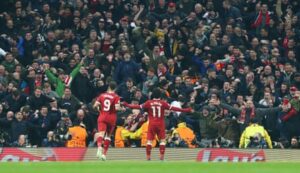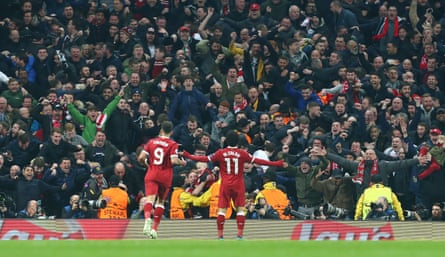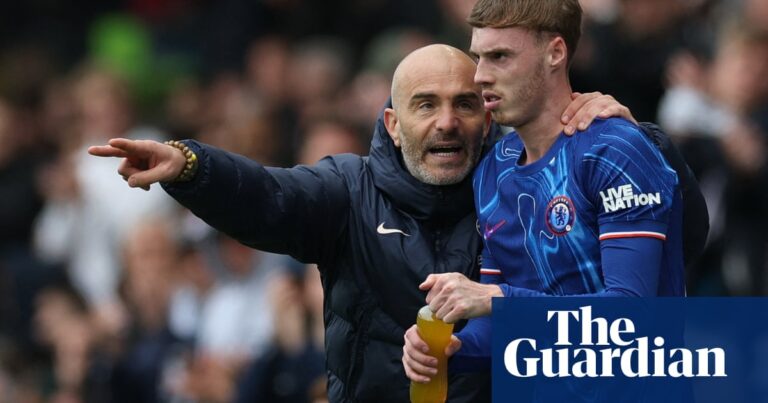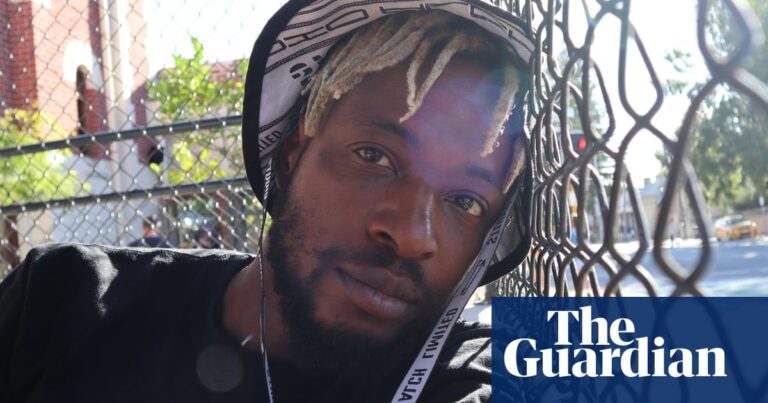In 2021, I tried to take advantage of the October international break to go to a game as a fan. No sooner had I booked trains and hotels, though, than it emerged Sunderland had accumulated enough Northern Ireland internationals for their League One game against Oxford to be called off. So I did the only reasonable thing you can do in the circumstances, got in touch with the doyen of the non-league scene in the north-east, Harry Pearson, and invited myself along to whichever game he was going to.
We ended up at Seaham Red Star v Ashington in Northern League Division One, the ninth tier of English football. I’ve no idea what the score was, although I know Ashington had Steve Harmison’s brother Ben playing at centre-back and an Alice-banded dribbler on the wing, the Pitman Grealish. But most striking was that everybody passed out from the back. The difference from 25 years earlier, when I’d worked the turnstiles at Whitley Bay, was barely credible. I mentioned it to Harry, who explained that it had become entirely normal: the Guardiolisation of English football was universal.
I asked a few coaches about it in the weeks that followed and they all essentially said the same thing: pitches at every level are much better these days. A lot of kids grow up playing on 4G surfaces and even grass pitches are often hybrids. They don’t live in fear of bobbles as they would have done 20-30 years previously, first touches can be taken almost for granted, and so the game becomes far less about pouncing on miscontrols and far more about movement and the manipulation of play to try to create overloads.
At the time, this just seemed a natural extension of the way the game had been going since Pep Guardiola became Barcelona manager in 2008: he emerged into a world ripe for his vision of football after improvements in technology, changes to the offside law that had stretched the effective playing area, and the crackdown on intimidatory tackling that reopened the game to diminutive technicians.
Guardiola took the principles of Total Football and extended them into the new environment, changed what seemed possible to the extent that Manchester United players after the 2009 Champions League final defeat by Barcelona spoke of feeling almost humiliated by not having the ball for protracted spells, losing discipline as a result.
That template has come to dominate attitudes. Football was once a game of territory, so governed by the impulse to get the ball away from your own goal and towards the opponents’ that match reports were fixated on wind direction. Now it is a game of possession: rather than “they can’t hurt us if the ball is in their half”, the mentality has become “they can’t hurt us if they don’t have the ball”. Managers who challenged that orthodoxy were treated either as dinosaurs (Sam Allardyce), rebellious outsiders (Diego Simeone) or misguided apostates (José Mourinho).
It’s Mourinho, perhaps, who is the most interesting of those examples, if only because of the turn he took after being overlooked for the Barcelona job in 2008 to become the anti-Barça. If they played with the ball, he would play without, he decided, coming up with his infamous checklist that, notoriously, included the line: “Whoever has the ball has fear.” Recently it’s come to feel that a lot of players with the ball might benefit from being rather more fearful.
Burnley and Southampton in the past two seasons have exemplified the danger for teams who were promoted playing out from the back trying to maintain that approach in the Premier League. Last Sunday, Tottenham had spells when they couldn’t get out of their half, largely because they kept trying to pass it short and ran into the Aston Villa press. Even Manchester City, the team who popularised the approach in England, keep being caught out now. Last Saturday, it was Nico González who was overpowered as he dithered on the ball, leading to Leyton Orient opening the scoring. On Tuesday, it was a misplaced pass from Ederson that led to the second Real Madrid equaliser.
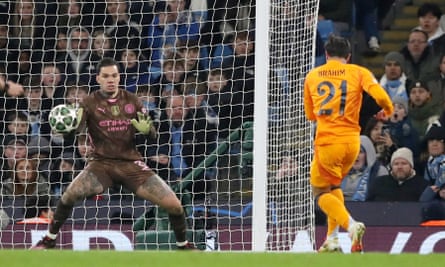
Which has led to the thought that the process wasn’t so inevitable as it seemed in 2021, that maybe passing out from the back has started to become counterproductive as opponents become increasingly adept at setting pressing traps. Roberto De Zerbi’s Brighton demonstrated how a team can trigger the opponents’ press as an attacking move, looking to generate space behind them that can be exploited, but that is a high-risk strategy.
after newsletter promotion
But what is the alternative? Go long and the risk is possession is wasted – all the more so for teams without a target man – the only benefit being that the ball is at least lost a long way from goal. There is no clear halfway house, nor even much of an option for disguise: go long with players dropping to provide a short-passing option as a decoy and the danger is that possession is not merely lost, but there is no chance to set the defensive line before an opposition attack gets within shooting range.
Football is entering one of those crux periods in which it’s clear something has to change but it’s not obvious what. The paradigm is familiar: a team starts doing something, opponents react to stop them and then, for a while, a new consensus is reached before the next revolution. It feels as though what is happening now is that pressing structures are able to catch teams passing out from the back often enough that patient buildup from deep can no longer be an unthinking default.
At the very least, teams probably need to develop an exit strategy: what do they do if they find the opposition press squeezing them? Perhaps speculative balls into the channels for runners will become a counter to the counter-strategy. Or perhaps passing out from the back, while remaining the approach for the best teams, will become less common for others.
Perhaps teams will start going long more as a matter of course, although that would mean the return of big No 9s, who are perhaps already starting to make their comeback. Perhaps Chris Wood is not the throwback he had appeared but the future.
Source: theguardian.com


